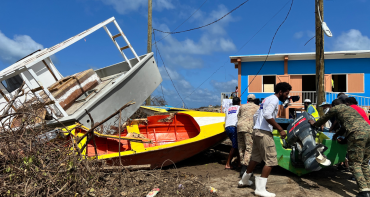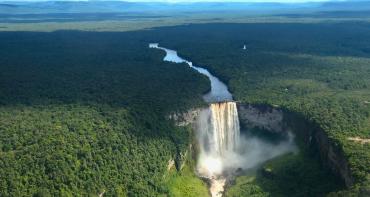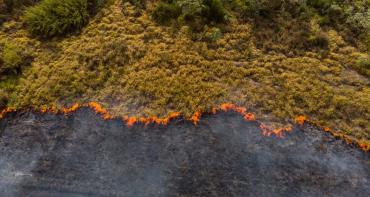By Dr Ruth Kattumuri, Senior Director; Reeya Rakchhandha, Assistant Research Officer; Mxolisi Sibanda, Interim Head of Climate Change at the Commonwealth Secretariat.

Botswana, Lesotho, Zambia and Namibia declared drought emergencies in 2024. Botswana produced only six per cent of its annual food needs in 2023 and witnessed a dramatic decline in its grazing land. Lesotho reported reduced agricultural production, biodiversity loss and increased malnutrition in children.
These emergencies came as drought emergencies were already escalating over the past few years. In 2022-2023, a staggering 23 countries across the world declared drought emergencies.
The impact of land degradation
Land degradation refers to the loss of land productivity due to deforestation, overgrazing, and urbanisation. Land degradation and droughts threaten food, water, employment and the economic development of entire countries and regions. With climate change exacerbating the effects of droughts, these issues are a growing concern for many Commonwealth countries, particularly Least Developed Countries (LDCs) and Small Island Developing States (SIDS).
The hotspots of land degradation are currently concentrated in Africa, with The Gambia (35 per cent), Gabon (29 per cent) and South Africa (29 per cent) reporting high percentages of land areas facing degradation. Alarmingly and perhaps surprisingly, many SIDS are drought hotspots, with Trinidad and Tobago, Saint Vincent and the Grenadines, Malta, Jamaica and many more having their entire land areas affected by drought.
Land degradation results in reduced organic matter in the soil, weakened ecosystem resilience, drier conditions, biodiversity loss and ultimately reduces the productivity of ecosystems - especially for agriculture and food production.
Boosting resilience through partnerships
Last year in June, on the sidelines of the London Climate Action Week, we worked with the United Nations Convention to Combat Desertification (UNCCD) to bring different stakeholders together to discuss how innovations in drought insurance could be used to incentivise improved land management. We were drawing on examples that are already working for Commonwealth countries, like parametric insurance in Fiji and sovereign insurance coverage in Malawi and Zambia. Admittedly, these examples are still few and far between.
And, in December, the Commonwealth Secretariat organised a side event at COP16 in Saudi Arabia, to highlight the cruel realities of land degradation across the Commonwealth. The combined impact of degradation and drought in countries like Botswana and Lesotho and repercussions for their people echoed at the event.
This COP highlighted the importance of intersectoral collaboration in addressing drought, including the private sector; improving capacity of countries to quantify drought hazards, exposure and sensitivity; and financing drought plans and related policies through the Global Environment Facility and private sector contributions. This was in line with our own advocacy. The Riyadh Global Drought Resilience Partnership mobilised more than US$12 billion for this purpose.
The Commonwealth Secretariat has ramped up work with various partners to spotlight the impact of drought and support the development and implementation of drought mitigation plans, potential insurance mechanisms and mobilise drought financing, including from the private sector. In addition, through the Commonwealth Living Lands Charter, a thematic working group on Resilient Agriculture for Food Security has been established.
Drawing on best practices from member countries and partners, the thematic working group promotes climate-smart practices and crop diversification, facilitate capacity building and increase knowledge sharing. In executing these solutions, it is vital that Indigenous Peoples and local communities are involved. Member countries are urged to acknowledge their knowledge and concerns and integrate these into policies and solutions.
Unlocking climate finance
With current changes in the global political and economic landscape, together with the growing impacts of more frequent droughts and land degradation, the Commonwealth is committed to addressing the challenges of building resilience and delivering recovery for affected countries.
The Living Lands Charter and its implementation framework provide a blueprint for building climate-resilient futures and working with member countries and partners to enable a more climate-resilient future.
Similarly, our Commonwealth Climate Finance Access Hub (CCFAH) supports small and other vulnerable member countries to access much-needed climate finance for projects and programmes. Importantly, CCFAH has helped countries to raise over US$470 million in financing, with another US$500 million in the pipeline.
Our approach is to connect thinking and actions, centre local communities and Indigenous Peoples, and leverage on partnerships and the strength of our Commonwealth family.
Issues such as soil and water conservation and management; sustainable agriculture and livestock rearing and animal husbandry; as well as the protection and promotion of biodiversity must be pursued together if we are going to combat land degradation and the effects of drought. But we also know that there is much more to be done.
This op-ed was first published in the Lesotho Tribune on 8 June.



